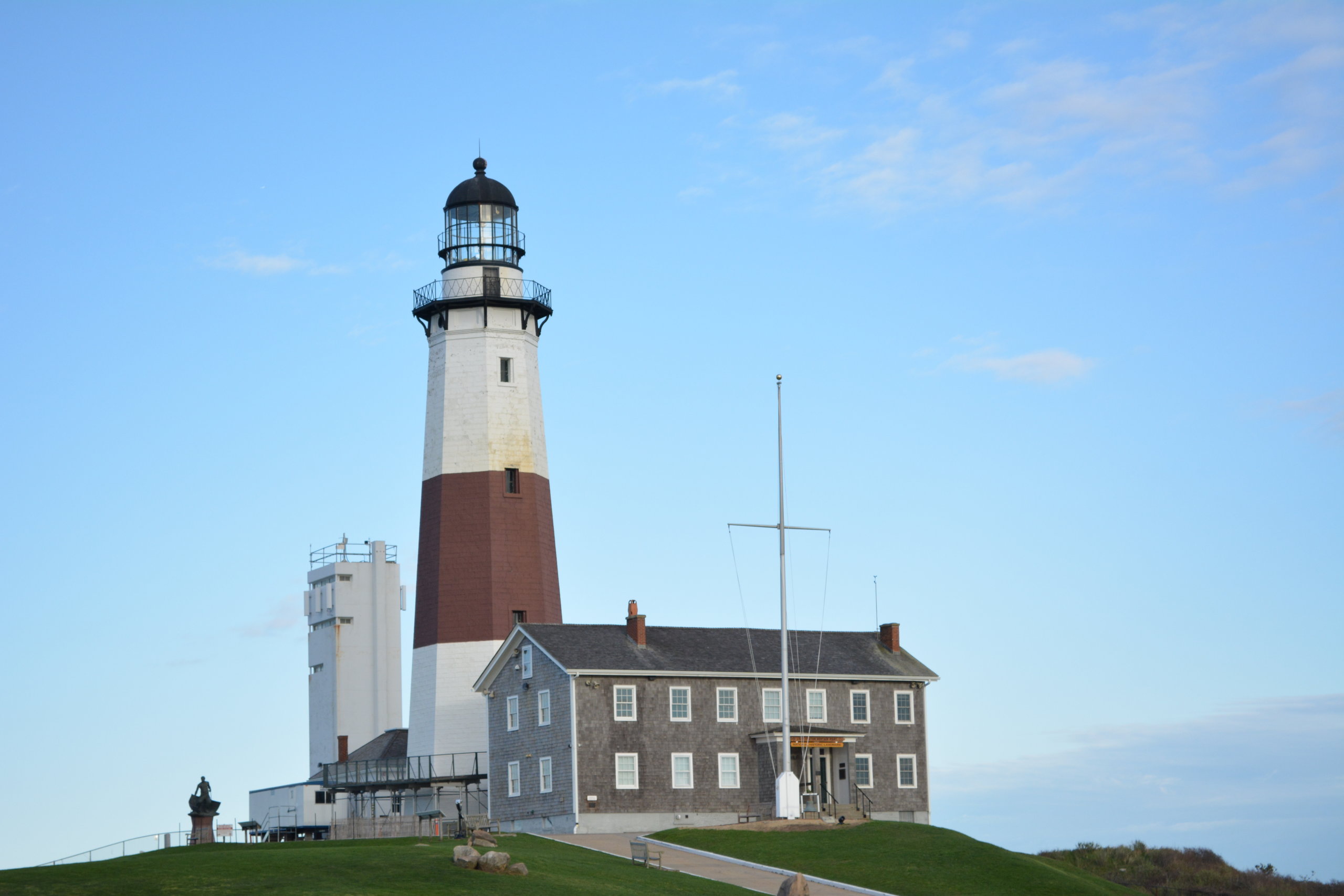The Montauk Lighthouse and Its Incredible History

After the United States achieved independence, President George Washington thought to build a lighthouse at Montauk Point. Advised by Ezra L’Hommedieu, a member of the Second Continental Congress and a prominent Southold lawyer and friend, Washington ordered plans drawn up and permission obtained from Congress, in 1792. L’Hommedieu told Congress that a third of all the country’s imports were coming into New York and they needed this lighthouse. Next, a builder, John McComb Jr., had horse-drawn wagons haul in heavy blocks of sandstone from Connecticut and set them up in a pile about 400 feet from the edge of the cliff.
After five months, the octagonal lighthouse was completed. It stood 80 feet high. Walls at the base 13 feet underground were 9 feet thick and, up at the top, 3 feet thick. In April 1797, a local keeper carried eight lanterns up an interior metal spiral staircase to the glass enclosure on the top floor, filled them with whale oil and lit the wicks, starting the shining of this lighthouse which continues to this day.
Of course, the oil in those lanterns needed to be refreshed daily. For that to happen, a small dwelling was built and attached to the lighthouse to become home for this keeper and his family. Alone there and six hours away by horse and buggy from civilization, the family grew their own vegetables, canned fruit, raised livestock and caught fish to survive on their own. When a keeper retired, usually his son would take over. This kept up for more than 100 years.
Over time, ever larger lanterns were brought up top. In 1860, a special French lens with the light powered by kerosene was hauled up. It stood 12 feet high and weighed more than 10,000 pounds. To accommodate it, the top of the lighthouse was extended upward another 30 feet. In 1873, a fog horn was added, its powerful moan audible for miles from inside a small outbuilding powered by steam.
Numerous shipwrecks on the rocks or cliffs nearby occurred over the years. The keeper and his family rescued when they could, drove off in the wagon to get help when they could not. In one instance, the appearance of a newly built light from a lighthouse beacon in Hampton Bays confused a ship’s captain in an offshore ice storm into thinking it was the Montauk Point Light. He then ordered his crew to sail around Montauk, a misadventure resulting in a full-force crash into the beach and cliffs at Ditch Plains that killed about 30 people on board.
During World War II, the U. S. Army took over operation of the Montauk Lighthouse as part of its Eastern Coast Defense Shield against the Germans. The keeper and his family left, never to return. In 1946, with the war over, the Navy turned the place over to the Coast Guard, which stationed a small crew in the dwelling.
Incredibly, in 1967, the Coast Guard considered having the lighthouse torn down. They saw it as a belt-tightening measure. The cliff was eroding and the lighthouse was now less than 46 feet from the edge. The Coast Guard would construct a new steel tower 1,000 feet inland and operate its light remotely. At the time, this young reporter, as founder of Dan’s Papers, organized protests to stop this. Some 3,000 people stood vigil on one occasion. 1,500 did on another. A year later, the Coast Guard rescinded its order.
The protests sparked Giorgina Reid, a young woman from Rocky Point, Long Island, to personally go out to the lighthouse with volunteers every Sunday and, with Coast Guard permission, build terracing on the cliff face to stop the erosion. They did that for nearly 20 years and the erosion ceased. In 1996, the Coast Guard handed the building over to the Montauk Historical Society, which runs the lighthouse as a museum to this day, with the Coast Guard operating a powerful 290,000-candlepower airport beacon up top remotely. One room in the museum is donated entirely to Giorgina Reid.



